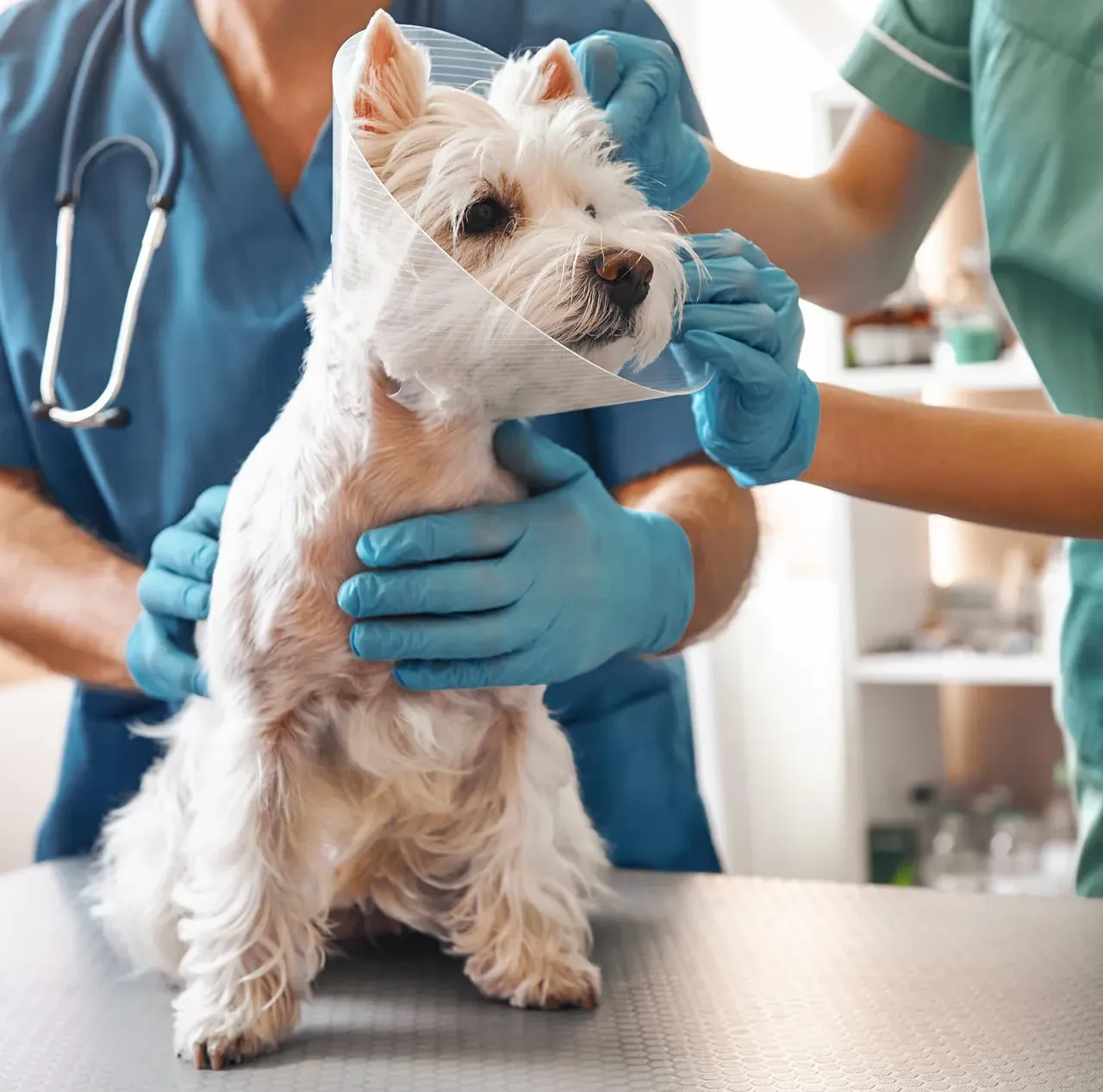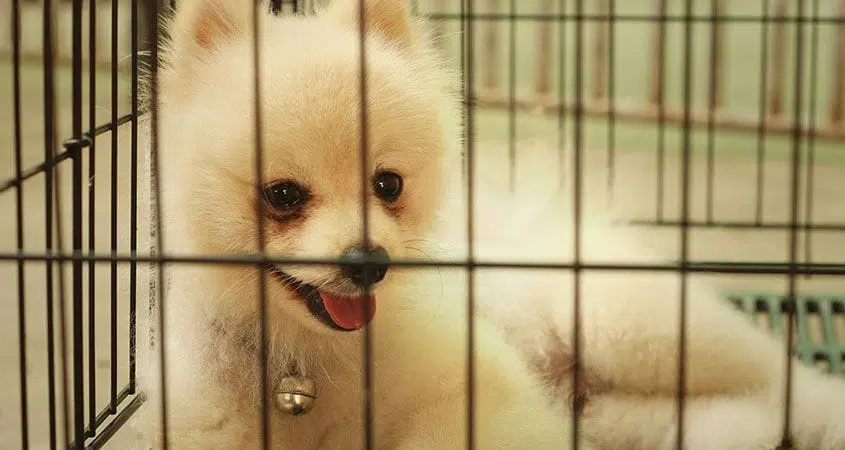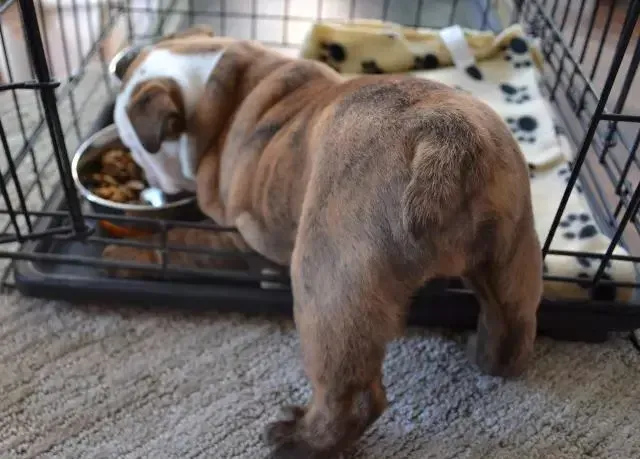Puppy Crate Training
Many dogs go to neutering for the first time, see a doctor and be hospitalized, or even simply close the cage for boarding, are very resistant to entering the cage, or behave very anxious in the cage, do not eat or drink, turn back and forth, bark, bite the cage. In fact, these manifestations are very detrimental to the recovery of the disease, and may even cause injury to staff.
It is recommended that all dog owners buy a suitable size kennel and train their dogs.

Here's a detailed look at what cage training is, why it's done, how it's done, and what to look out for.
1. What is dog cage training?
Dogs have a natural nature to find caves to sleep or take refuge, and dog cage training is to use this nature to make dogs feel safe and happy in the cage. So you must let the dog associate pleasant things with the cage, and never put it in a dog cage when you want to punish it.
In fact, effective behavioral training is about rewarding the correct, desired behavior, combined with a small amount of negative punishments.
Verbal reprimands and cages have no effect or can cause the dog to be more confused.
2. Why should I practice kennel training?
- A good helper for training toilets: dogs naturally do not like to dirty their nests, and dog cage training can allow dogs to learn to hold urine until they are released, thereby guiding outdoor toilet training.
- Prevent trouble: When there is no one in the house, for the safety of the dog, and for the integrity of your furniture and sofa.
- Safe transportation of dogs: It is safer to put the dog in a cage and then put it in the car to avoid the dog jumping out of the car and running away due to refueling or collision accidents (there have been encounters where puppies jump off high off-road vehicles and cause fractures). Airplane transportation is also to put the dog in a cage.
- Quietly live in an animal hospital dog cage: A dog may spend his or her life in an animal hospital cage, or after some surgery, it will need to be restricted from activities and need to stay in the cage. Pleasant stay in the cage is conducive to the healing of the disease and ensures the smooth operation of the clinical staff.

3. Start training
The core points of training are:
Let the dog associate the cage with happy, happy things.
Do not force it into the cage. Do not use as punishment.
Patience is important, take your time.

Introduce it Casually
The worst way you can introduce your puppy to the idea of a crate is to bring it home and lock him inside it immediately. People don’t like being trapped against their will, and neither do dogs. Instead, you should initially treat the crate like it’s just another piece of furniture — but one that he can enjoy.To this end, place it in a part of the house that he frequents, add a blanket and a toy or two, and keep the door open. Then back off and give him a chance to explore it. Some dogs will immediately start sniffing around and going into the crate, which is a great sign. If your puppy isn’t quite so bold, encourage him to check it out by placing favorite foods and toys near and inside the crate. The ultimate goal is to get him comfortable with going inside, and this is something that could take days. Be patient with the process.
Use it for Meal Time
After she’s willing to enter the crate, your next goal is to get her comfortable with staying inside for extended lengths of time. One of the best ways to do this (and create a positive association with the crate) is to start putting her food in the crate.If possible, you want to place the food at the back of the crate so that your dog goes all the way in. Some dogs may not be willing to do this, though, so you can start with the food just inside the crate and slowly move it back with successive meals.

Close the Puppy Crate
As soon as your dog is eating his meals while standing all the way inside the crate, it’s time to close the door. After he’s done eating that first time, open the door immediately. You’ll leave him in longer and longer with each meal, adding just a few minutes every time.It’s possible that your dog may whine. If this happens, open the crate immediately and don’t leave him in as long next time. However, if he whines again, wait until he stops before letting him out or you will teach him that whining equals open door.
Extend Crate Time
Once your dog is hanging out in her closed crate without signs of stress, it’s time to lengthen her stay. Use a favorite toy or treat to encourage her to enter the crate, then close it. Hang out by the crate for several minutes, then go into a different room for a few minutes so she gets used to the idea of staying in the crate alone. When you return, don’t open the crate immediately. Instead, sit with her again for a few more minutes and then open the door.Keep increasing the time as you do this until your dog is able to stay in the locked crate for half an hour without your presence. When she’s able to do this, she’s ready for you to leave her for short periods and possibly even sleep in the closed crate overnight. Make sure you keep the crate relatively nearby for overnight stays though. Puppies usually need to go to the bathroom overnight and you’ll want to be able to let her out.
Leaving and Returning
The key here is to make crating seem completely normal and avoid excitement. Encourage him to get into the crate and praise him when he does so, but keep it brief. When you come home, stay low-key and ignore any excited behavior that he shows.
Training Notes:
Again, not to put dogs in cages as punishment will make them more annoying and afraid to stay in the cages.
Whether adult or not, don't let it be kept in a cage for too long, and it will not be in a cage for most of its life. Puppies less than 6 months old cannot be kept in a cage for more than 3 hours, they are too young for their bladder to hold urine for such a long time.
The training time takes several weeks and varies according to the dog's personality, experience. Always be patient, take your time, little by little.
After training to a certain extent, the door of the cage can remain open, and they can enter as long as they want to go in.
Cage selection:
Size: Just right enough to stand and turn inside. It can't be too big, it's too big, it's partitioning the space inside, this end is sleeping, that end is peeing. For dogs with a long body, you may need to buy two different sizes, or a cage that can be adjusted.
Material: metal, wood, can be selected according to preferences, home decoration.
Finally, with the right method, you can train animals to do anything, but all training requires your patience. Your patience is important. Be Patient!
Resources: https://www.cesarsway.com/puppy-crate-training-made-easy/




